Port de Banana

Exhibit Dates: Friday, May 30, 2025 – Sunday, August 10, 2025
Port de Banana, an exhibition of work by Lio-Bravo Bumbakini, invites viewers to the small coastal seaport of Banana, at the mouth of the Congo River, the symbolic first point of contact between the western world and the Bantu Tribes inhabiting the region we know as the Democratic Republic of Congo today. This mixed media exhibition tells Banana’s history through a lucid dream-like metaphysical lens steeped in abstractions and surrealism.
Bumbakini mixes vibrant colors, symbols and archetypes with tribal and traditional African motifs and contemporary Western ideas. This exhibition explores the narratives of life before and after the “discovery” of Congo from an anthropological and folkloric perspective. The artist envisions the modern experience in swaths of folkloric imagery inspired by his Congolese heritage, Belgian upbringing, and the two decades he’s spent across the USA in diaspora.
Exhibit Event: Opening Celebration
Thursday, May 29, 2025 at 5:30 p.m.
Come to the Littleton Museum on Thursday, May 29, 2025 at the Littleton Museum at 5:30 p.m. for the Opening Celebration for Port de Banana.
No RSVP required. All ages welcome. Light refreshments provided. Ample parking available in lot.
The celebration includes:
- Introduction of exhibit by artist Lio-Bravo Bumbakini
- Spoken word/poem recital by award-winning scholar and poet Toluwanimi Obiwole
Toluwanimi Obiwole is a Nigerian multidisciplinary artist who explores her art through poetry, visual art, curation, and textile production. She is a seasoned storyteller, poet, and visual artist with a dedication to re-indigenization, intergenerational healing and cultural memory keeping. She was the former Youth Poet Laureate for the State of Colorado and has received awards for DEI storytelling from the University of Colorado Boulder. She is a two-time TEDx speaker, has published a book of poems with Penmanship Books in New York City and has been published in Haymarket Books' most recent iteration of The Breakbeat Poets. Her practice as a storyteller has opened the door for her to introduce poetic storytelling methods to people who otherwise would not engage with poetry.
- Live set by Congolese trio Manasse Kaoma and Friends
Born in Kinshasa, Democratic Republic of Congo, emerging guitarist Manasse Kaoma has captivated audiences with his soulful, eclectic sound. He began his musical journey in a Kinshasa-based band but later moved to South Africa to study at the Cape Music Institute and the London College of Music where he graduated. In 2021, Manasse joined the music group 29:11, which led to his first U.S. tour in 2023. To date, Manasse has collaborated with notable artists like Grammy nominee Zahara, Temba Fassie, Nigerian gospel singer Sinach, American artist Dessa, and French guitarist Marcel Boungou. His performance highlights include the Sinach concert, Jazzathon Festival, and Kinshasa Jazz Festival. Excitingly, he plans to release his debut album in 2025/2026, marking his first project as a solo artist.
Exhibit Event: Artist Talk
Thursday, June 5, 2025 at 5:30 p.m.
Doors open at 5:30 p.m., talk begins at 6 p.m.
Ample parking available in lot.
Running West

Exhibit Dates: Friday, January 31, 2025 – Saturday, April 19, 2025
This contemporary art exhibition by artist Chuck Brenton delves into the profound experience of navigating mountain landscapes while capturing the essence of memory and the visceral impact of nature. The works celebrate the euphoric flow-state achieved during trail running, where mind and body synchronize with sensory input from the environment, creating a harmonious blend of perception and experience.
The exhibition features a collection of polished and painted hybridized bronze works, ranging from two to five feet in height. Each piece echoes the fleeting glimpses of peripheral landscapes that are absorbed almost subconsciously.
Influenced by the color field painters of early childhood, Brenton embraces a minimalist yet powerful aesthetic, focusing on pure shape, vibrant color, and the introspective qualities of reflective surfaces. The dynamic interplay of fragmented forms and shapes evokes splintered memories and fleeting moments on the trails, while bold colors reflect the grandeur of the natural world. The simplicity and clarity of each piece invites viewers to find beauty in fundamental elements, transforming trail inspirations into a serene visual moment.
Embedded within his practice is Brenton's journey of training for and experiencing an ultramarathon in the Never Summer and Medicine Bow Mountain ranges of Colorado and Wyoming. His work captures the endurance and perseverance required of such an effort.
The exhibition invites viewers to reflect on the interplay between the physical and emotional terrains we navigate, offering a contemplative space to consider the journeys that shape us, the memories that linger, and the new horizons we constantly seek.
The exhibition is on display at the Littleton Museum from January 31 until April 19, 2025.
About the Artist
Chuck Brenton is renowned for his distinctive sculptures inspired by mountain environments. Employing innovative techniques and vibrant colors, his work is an ode to the sublime connection with nature, where one feels both insignificant and profoundly connected within the vastness of the universe.
Graduating from Colorado State University, Brenton's multidisciplinary studies in Sculpture, Landscape Architecture, and Environmental Science inform his artistry. His technical expertise was honed at a fine art bronze foundry in Loveland, Colorado where he pioneered a distinctive color system for polished bronze, defining his unique fusion of painting and sculpture.
Brenton's work has been featured in many Colorado venues, including Artworks Center for Contemporary Art, the Arvada Center for the Arts, the Boulder Museum of Contemporary Art, the Crested Butte Center for the Arts, and Lone Tree Arts Center. He has garnered multiple awards, earning recognition among curators and collectors along the Front Range.
Exhibit Events
Opening Reception: Thursday, January 30, 2025 at 5:30 p.m.
Join us on Thursday, January 30, at the Littleton Museum at 5:30 p.m. for the Opening Reception for Chuck Brenton: Running West.
No RSVP required. All ages welcome. Light refreshments served. Ample parking available in lot.
Artist Talk with Chuck Brenton: Thursday, February 27, 2025 at 6 p.m.
Doors open at 5:30 p.m.; Talk from 6 - 7 p.m.
This event is free and open to the public. Ample parking available in lot.
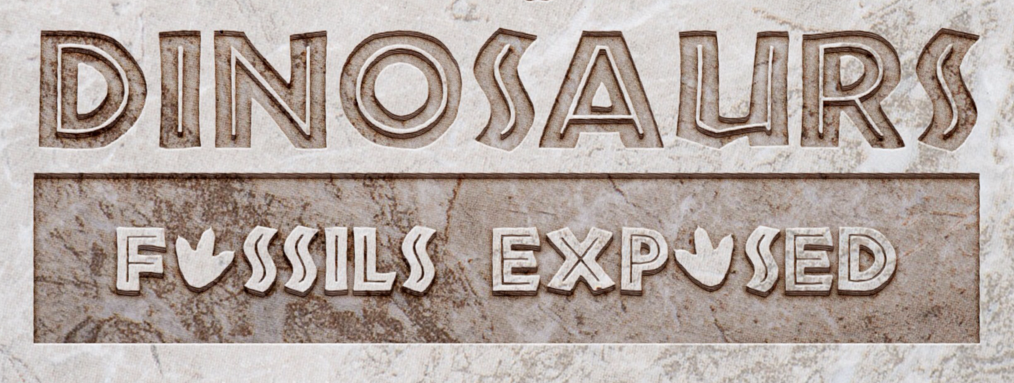
Dinosaurs: Fossils Exposed
Exhibit Dates: January 17, 2025 - April 6, 2025
Dinosaurs are taking over the Littleton Museum in the new exhibit, Dinosaurs: Fossils Exposed, opening on Friday, January 17, 2025!
Dinosaurs: Fossils Exposed explores the bones and fossils of these giant creatures that once roamed the Earth. Guests can get up-close looks at fiberglass molds and foam models of skulls, arms, feet, and everything in between. The exhibit features six life-size skeletal molds of well-known dinosaurs like Triceratops, Tyrannosaurus Rex, and Velociraptor.
Curious kids and adults can explore the unique world of dinosaurs by comparing their hands to casts of dinosaur footprints and standing next to a 6-foot-1-inch Apatosaurus femur.
Dinosaurs: Fossils Exposed was conceptualized by the Arkansas Discovery Network, a museum partnership.
About the Arkansas Discovery Network
The Arkansas Discovery Network is a nonprofit organization affiliated with the Donald W. Reynolds Foundation. The network of museums shares operational strategies, collaborates with schools and teachers, and expands educational programs.
Exhibit Events
Dinosaurs: Fossils Exposed Opening Reception
Thursday, January 16, 2025 at 5:30 p.m. at the Littleton Museum at 5:30 p.m.
No RSVP required. All ages welcome. Light refreshments served. Ample parking available in lot. A paleontologist will speak about the dinosaurs in the exhibit!
A Place for All People: Introducing the National Museum of African American History and Culture

Exhibit Dates: Friday, September 20, 2024 – Sunday, December 29, 2024
The Smithsonian Institution opened its newest museum, the National Museum of African American History and Culture, September 24, 2016. The celebration continues and reaches beyond Washington, D.C., to Littleton, Colorado, as the Littleton Museum presents “A Place for All People: Introducing the National Museum of African American History and Culture.” The commemorative poster exhibition will be on view September 20 through December 29, 2024.
Organized by the Smithsonian Institution Traveling Exhibition Service (SITES) in collaboration with the National Museum of African American History and Culture (NMAAHC), “A Place for All People” highlights key artifacts that tell the rich and diverse story of the African American experience. From the child-size shackles of a slave and the clothing worn by Carlotta Walls on her first day at Little Rock Central High School to Chuck Berry’s Gibson guitar, “Maybellene,” and the track shoes worn by Olympian Carl Lewis, the exhibition presents a living history that reflects challenge, triumph, faith, and hope.
The poster exhibition and related public programs are an opportunity for the Littleton Museum to showcase its work in sharing the many stories of African American and African diaspora people and their contributions to the local community and the American story.
About National Museum of African American History and Culture
The journey to establish this museum began a century ago with a call for a national memorial to honor the contributions of African American Civil War veterans. After decades of efforts by private citizens, organizations, and members of Congress, federal legislation was passed in 2003 to create the NMAAHC. Since then, thousands of artifacts have been collected to fill the inspiring new building that has risen on the National Mall. Through its exhibitions and programs, the museum provides a shared lens through which to view the nation’s history and the possibility for hope and healing. It is a place where all can gather to remember, reflect, and embrace America’s story: a place for all people. For more information, visit nmaahc.si.edu.
About SITES | Smithsonian Affiliation
The Smithsonian Institution Traveling Exhibition Service | Smithsonian Affiliations (SITES | Affiliations) is a critical national outreach unit at the Smithsonian Institution. For more than 70 years, SITES has been connecting Americans to their shared cultural heritage through a wide range of exhibitions about art, science, and history. Smithsonian Affiliations establishes and maintains the Smithsonian's long-term partnerships with museums, educational organizations, and cultural institutions in the U.S., Puerto Rico, and Panama. Together, SITES and Affiliations share the Smithsonian's vast resources with millions of people outside Washington, D.C. Visit sites.si.edu and affiliations.si.edu for more information.
Exhibit Events
Smithsonian Speaker Dr. Ariana Curtis: Thursday, October 17, 2024 (6 p.m.)
Lecture by Dr. Ariana Curtis of the Smithsonian Institution on Thursday, October 17 at 6:00 p.m. at the Littleton Museum.
Doors open at 5:30 p.m.; Lecture from 6 - 7 p.m.
This event is free and open to the public; an RSVP is required as seating is limited. Ample parking available in lot.
or call the Littleton Museum front desk at 303-795-3950
About the Speaker
Dr. Ariana A. Curtis is the first curator of Latinx Studies at the Smithsonian National Museum of African American History and Culture (NMAAHC), where she leads research and collections that center Latinidad through an African American lens. She has also held leadership roles in major Smithsonian Institution initiatives including Reckoning with Our Racial Past and the American Women’s History Initiative. A seasoned public speaker, her TED talk about women and museum representation has over 3 million views. Curtis is a Fulbright scholar with a doctorate in anthropology. She is a founding member of the Black Latinas Know Collective, and board member of Duke University Libraries, the National Association of Latino Arts and Cultures, DC Diaspora Arts Council, and the Museums Association of the Caribbean.

Below the Surface: How mining altered Colorado's social and cultural landscape
Exhibit Dates: July 14, 2023 – October 27, 2024
Mining for precious metals and other resources exploded in the Colorado Territory in the 1860s. There are rather romanticized notions of people braving the Wild West to seek out fortunes, striking gold and making a rich and fruitful life for themselves. While there are certainly success stories, there are many examples of struggles and failures, and the reality is more nuanced. The people that came to the region in search of gold and silver did not arrive to an empty and unutilized setting. The region had a rich geological and cultural landscape, with beautiful and diverse flora and fauna. There were Indigenous people living both permanently and seasonally in the region who were connected to the land, utilizing it for food, shelter, and to support their culture.
Encounters between settler fortune-seekers and Native Americans did not immediately result in conflict. There was a period of co-existence while concessions were made to allow for both groups to access the land for their respective needs and desires. Ultimately, the greed for more land and greater access led to increasing hostility, followed by battles, treaties, and eventually the restriction of Native lands and the relocation of Indigenous tribes.
The instances of individual miners “staking a claim and making it rich” began to thin as investors from the East bought up smaller mines and corporate conglomeration of the mining industry began. New technology and modes of transportation facilitated an expansion of the industry, and it became a dangerous and exploited business with those who risked the most earning the least, and those that never set foot in a mine reaping the rewards. Tensions escalated between laborers and mine owners, resulting in strikes and a fight for better working conditions and higher wages.
Below the Surface is an exhibit that aims to dig deeper and tell the real historical stories of the gold, silver, and coal mining rushes in Colorado. Visitors will find that the development of the mining industry in this region altered the course of its history, creating opportunity for some and difficulty for others. Despite the challenges, failures, and deaths, mining provided a chance for people to make a new life, and for new businesses to emerge. The direct result wasn’t always positive, but some wonderful things came to be, in one way or another, because of mining. It is important that we tell the sad stories to honor and mourn that which was lost. This exhibit also celebrates the perseverance of those who did not strike it rich, or who suffered at the expense of mining, but whose grit allowed them to forge on, becoming a part of the evolving social and cultural landscape that is Colorado.
Visitors to this exhibit will learn about the geology of the region and different types of mining. They will experience artifacts from some of the Indigenous cultures that originally inhabited the area. Moreover, they will follow the progression of the mining industry from small, one-off claims to large corporate expansion, and the cause-and-effect relationships that occurred throughout mining’s development. Lastly, they will learn about individuals with lesser-known stories who came to the region in search of riches and found their unique version of success. In addition to artifacts, maps, and timelines, visitors can watch short films that present the story of mining in several towns in Colorado. There are many interesting and educational things to see in this family-friendly exhibit.
Learn More Online
An interactive StoryMap about the exhibit: Learn more about the locations mentioned and artifacts displayed in Below the Surface.
Below the Surface Exhibit Mineral Specimens: Learn about the rock and mineral specimens seen in the exhibit. These specimens come from all over the United States!
Mining in Colorado, circa 1950 to present day: While gold and silver have prompted dreams of riches, other minerals and fuels found in Colorado have created prosperity across the state. Learn about four of the more recently mined resources around the state.
Jodi Stuart: Future Fabulist
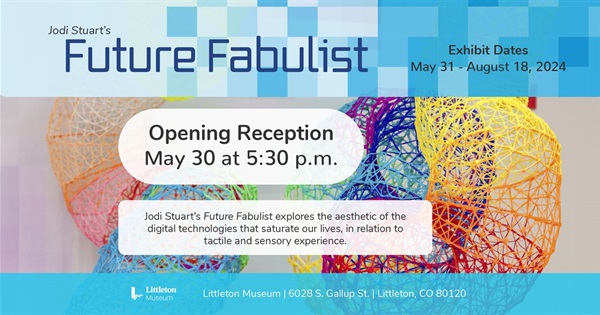
Exhibit Dates: Friday, May 31, 2024 – Sunday, August 18, 2024
In Future Fabulist, Jodi Stuart explores the aesthetic of the digital technologies that saturate our lives, in relation to tactile and sensory experience. Her woven sculptural forms are made using the plastic filaments intended for 3D-printers. Through her materials and processes, Stuart replaces the computer with the human hand subverting the materials of high-tech culture in a nostalgic gesture towards the hand made.
Stuart’s Future Fabulist exhibition consists of anamorphous, quirky and vaguely biological forms created by hand using a 3D-pen and plastic filaments. These are combined with colorful and pixelated background imagery, as well as super-synthetic materials such as acrylic rods and industrial foams. These works allude to craft traditions including weaving, knitting, and basket making; while hinting at virtual space, neural networks, cloud computing, and biomimicry. Her art practice explores ideas around the invasive materiality of consumer plastics, while playing on aspects of the virtual versus the physical, by integrating notes of contemporary culture’s aesthetic of hyper-stimulation and sensory overload.
This body of work was initially inspired by a depiction of the inner workings of a cell from the computer animation called ‘The Inner Life of the Cell’ by Harvard University Biology Department, produced in 2006. The hyperrealist, educational, computer-generated imagery demonstrates the mechanisms of cellular processes, and in Stuart’s view, inscribing machinic connotations onto the tiny organic forms. Biology and technology have become increasingly interwoven since then. For example, describing cellular processes as ‘tiny machines’, medical treatments as 'bio-hacks', or even the term ‘genetic engineering.’
In combination, Stuart’s bright synthetic colors, layered filaments, and textures combine to create optical and visceral sensations hinting at the insidious nature of technology and biomechanics. Her tone is kitsch, colorful, and playful in appearance, with forms that are ambiguous in meaning. Overall, she aims to create an immersive visceral experience where the viewer must constantly resist touching the deliberately inviting works.
About the Artist
Jodi Stuart was born in New Zealand, where she attained a Bachelor of Visual Arts from Manukau Institute of Technology, Auckland, and an MFA from Auckland University. Stuart currently lives, works, and teaches in Denver.
Now based at TANK Studios, Stuart has previously been an artist in residence at RINO Art Park, part of Redline Denver’s Satellite Program. As well as exhibiting in her home country of New Zealand, Stuart has exhibited in California, Colorado, Michigan, Maryland, Texas, and Washington.
Exhibit Events
Opening Reception: Thursday, May 30, 2024 at 5:30 p.m.
Light appetizers and beverages will be served. No RSVP necessary.
Artist Talk with Jodi Stuart: Thursday, June 20, 2024 (2 - 3 p.m.)
Jodi Stuart will speak about her ‘Future Fabulist’ exhibit, including a gallery tour.
No RSVP necessary.
Portraits of Dementia
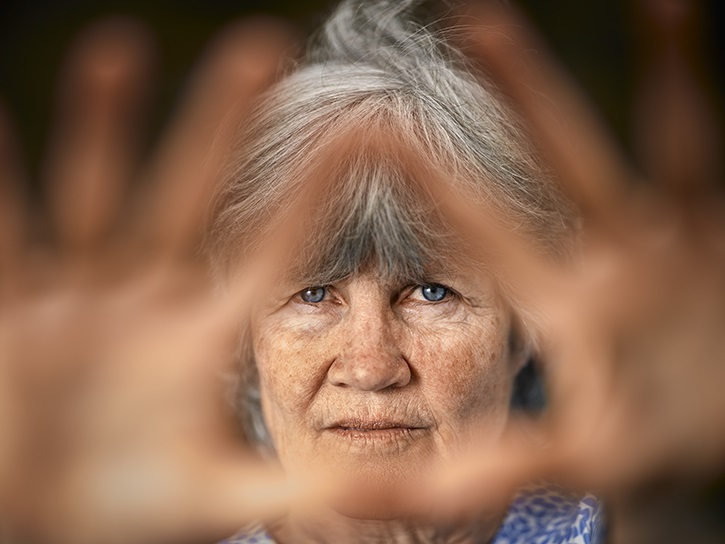
Joe Wallace, Rene Perkins, 2021; ink on paper, 28 x 35 1/4 inches (framed, approximate); Courtesy of the artist.
Exhibit Dates: February 9 – April 28, 2024
In 2022, over fifty million people are living with dementia globally. In the United States, one in three seniors suffers with Alzheimer’s disease or dementia at the time of their death. And yet despite the millions of individuals and families affected, dementia is often a taboo subject with limited public awareness or discourse. A diagnosis can become a mechanism for segregating those affected from society, making it easy to see only the label instead of the individual.
“…be joyful in every moment, because you might not have another one. If you just go to the grocery store, you can be kind to anybody you meet, and that could change their day.” – Bama Bradley, diagnosed with dementia
The typical narrative about dementia tends to focus on the clinical diagnosis or medical status of an individual, and is all too often depicted using fear, despair, and vulnerability. This narrow and incomplete view of dementia quickly becomes a powerful means to distance oneself from their humanity. Portraits of Dementia destigmatizes those living with dementia through moving portraits and stories of lives well lived.
“It is my hope that my story and the stories of others just like me will start a conversation and end the stigma that comes along with this disease. Just maybe I can bring a new face to Alzheimer’s so people know that it can happen to anybody, not just the elderly.” – Carrie Salter-Richardson, diagnosed with dementia
Trained as a journalist, artist Joe Wallace has been a portrait photographer and storyteller for twenty years. Like many, Wallace has a deeply personal connection with dementia. His maternal grandfather and hero, Joe Jenkins, had Alzheimer’s. His maternal grandmother had vascular dementia. And in recent years, his mother has begun her journey with the disease. Wallace was frustrated by the common, one-dimensional narrative of dementia—futility, despair, and loss. These are real and important elements of the dementia journey, but focusing only on the narrowest of views, very little is done to change the stigma of those living with the disease. Wallace feels strongly that to give the audience courage to act in ways large and small, you must show the whole story.
Wallace shows not only the fear, loss, and despair, but also the love, connection, dignity, and powerful humanity that always remain—in the subjects, in the care- partners, and in the families and communities. That is the only path to evolve the narrative and have a positive social change.
People living with dementia must be seen as people first, not as their disease. Public recognition of the enduring humanity of those who live with disabilities, including cognitive disabilities, will decrease fear and stigma. … Joe’s vivid photographs remind us of our shared humanity as well as the uniqueness of each person. -Beth Soltzberg, Director, Alzheimer’s/Related Disorders Family Support Program, Jewish Family & Children’s Service
This exhibition provides opportunities for rich programming and community engagement. Dementia impacts the lives of many people and this exhibition serves as a catalyst for community storytelling, learning, and healing. Artist Joe Wallace continues to add to this project and upon hosting Portraits of Dementia, could be contacted to collect more stories and portraits from your community. Additionally, this exhibition provides each hosting venue with the opportunity to foster new community partnerships. Special tours could be held for those with dementia and their caregivers. There is a powerful opportunity for local connection and collaboration with Alzheimer’s support groups, caregiver support and training, and councils on aging. Wallace has presented the work at university programs for social work and gerontology. Local libraries and agencies could work to archive community stories and photographs. Each booking will come with contact information for the artist, as well as a guide with ample programming resources.
Taiko Chandler: Thoughtful Intuition
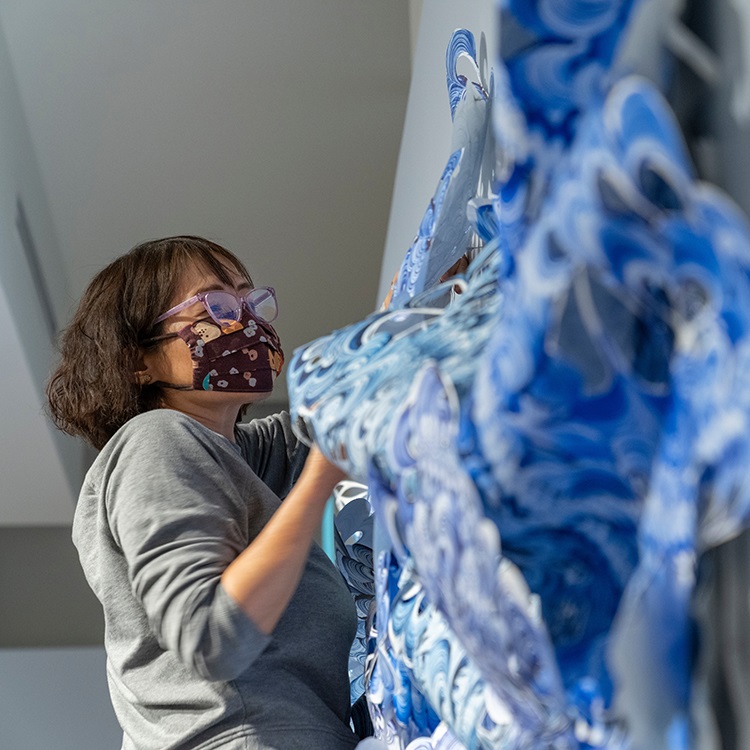
Photo by Scott Dressel-Martin, courtesy of the artist.
Exhibit Dates: September 22, 2023 – January 7, 2024
Opening Reception: Thursday, September 21, 2023 at 5:30 pm
Virtual Tour
There are many ways to approach art making, all of which are influenced by an artist’s training, background, and individual mindset. For some, an outline, pre-conceived layout, or diagram of some sort is necessary to complete the work. For others, the process follows a path of intuition with no fixed outcome in mind from the start. This process can include some or all of the following: addition, pause, response, subtraction, revision, fine-tuning, etc. Much of the intuitive creative process is based on feeling, memory, or perhaps the subconscious, differing from artistic practices that rely more on structure and specific steps in order to fulfill an outlined plan, or to recreate a sketched scene. Thoughtful Intuition is a solo exhibition featuring abstract artwork by Denver-based artist Taiko Chandler. This exhibit features monoprints, paintings, and installations by Chandler, all of which were created through her incredibly thoughtful yet intuitive process.
Taiko Chandler’s methods and her work are truly unique. Even though she possesses a natural ability to instinctually feel her way through a beautifully constructed piece from start to finish, her creation process is not without thought or cognition. Indeed, her approach is as layered as her pieces, nuanced with fragments of memories, interwoven with past and present personal events, and tied together with the strength of human bonds and a desire to share emotion and connection. Chandler does rely on conscious reasoning in her artmaking, although perhaps not in a linear form as most would anticipate. Rather, she seems to balance feeling with thought, thought with memory, and memory with desire, in a pattern that results in artwork that feels entirely precise and complete.
This is evident in some of her larger Tyvek print installation pieces on display in the exhibit. She starts by creating organic shapes on a sheet of acrylic using a piece of mat board. As she spontaneously fills in the space a pattern emerges that is then transferred onto Tyvek using a printing press. The emotion-driven creation doesn’t stop there, as Chandler then removes negative or non-inked parts of the Tyvek that don’t suit the piece by hand-cutting hundreds of holes. The result feels symbolic of the way we might experience some of our most deep-rooted memories that can have multiple perforations or blank spots. Instead of having an exact visual picture or a structured outline of the experience, we instead recall the curve of sentiments felt in that space. We sense the wispy dappling of a beautiful light, or the dense pull of a heavy sense of loss or sorrow. Chandler recreates the feeling of memory in a way that is both tangible and intangible simultaneously. Through each step of the creation process, there is a sense of her putting things in place, not systematically, but intuitively and organically as though gravity or a force of nature is at work.
About the Artist
Printmaking is Chandler’s primary art medium where she is driven to develop her own vocabulary. She is drawn, in particular, to its unpredictability. Chandler composes her work instinctively, combining shapes, colors, lines, and textures in order to express her imagination and react to the environment around her. The process is, therefore, both deliberate and iterative. She is constantly improvising with no fixed destination in mind. It is the open nature of the process that is constantly creating new possibilities. In addition to printmaking, she is interested in three-dimensional work, particularly installation art. Here, the work is also process driven. She is fascinated by the visual effect that occurs when responding to the material. There is an element of repetition in the construction of the finished piece. It is meditative yet compelling. The accumulation on a large scale changes the narrative and produces something that is transformative.
Born and raised in Nagano, Japan and originally trained as nurse, Taiko lives and works in Denver, Colorado. Since taking her first art class at the Art Students League of Denver, Taiko has focused on printmaking; more recently she has begun exploring other media, including installation, to express her inner vision. Taiko’s site-responsive installation made with monoprints on Tyvek was part of the exhibition “Hokusai: Inspiration and Influence” at Museum of Fine Arts Boston, Massachusetts, (March 26 – July 16, 2023). Taiko’s work has been exhibited in Colorado (including solo exhibitions at Boulder Museum of Contemporary Art, Denver Botanic Gardens) and other states, as well as numerous print fairs throughout the U.S. Her work is included in private and public collections in the U.S. and Japan, including the Cleveland Clinic Art Program, University of Colorado Denver Business school, Memorial Sloan Kettering Cancer Center in New York City and the Denver Art Museum (Education Collection).
https://taikochandler.com/
Christopher Warren: REinterpreting REcreating Nature
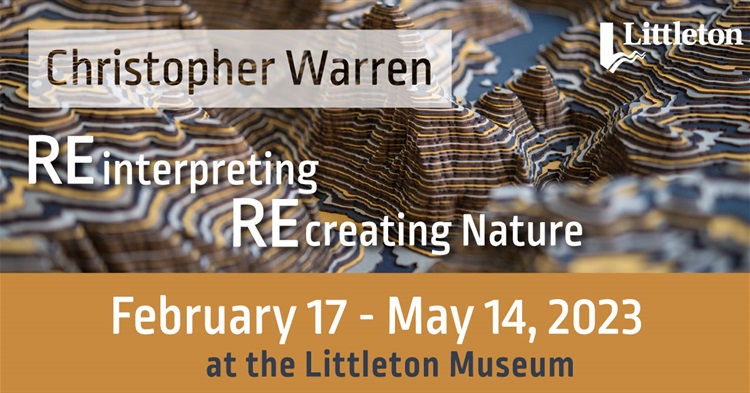
Exhibition Dates: February 17 – May 14, 2023
Humans have been reinterpreting nature as far back as we can record. From the paintings of lions and bulls in the Lascaux Caves of France, to the countless landscape paintings through the ages, humans have been recreating the natural world around them through visual art. In the digital era, those recreations have come in the form of isolated slices that are then turned into bits of data. Images are turned into tiny square pixels, one color each. Smooth arcing sound waves are broken into narrow rectangles that mimic the mountains and valleys of audio. Stunning landscapes are translated into concentric lines emanating from the tallest points as topographic maps. This process of digital cataloging has allowed the average internet user to access a mind-bending amount of data, but after this digital transformation, the landscape is rarely, if ever, recreated into a physical form again. REinterpreting REcreating Nature explores the digitization of natural forms, be they landscapes or biological shapes, and presents known lands and gestures in new ways, by retranslating the digital information back into a physical representation.
Christopher Warren began this artistic exploration with the recreation of landscapes through digitized topographic maps. By combining a massive trove of digitized maps, their free access on the internet, and affordable use of machinery at maker spaces across the US, he created the initial sculptures in this collection that are products of the era and technology they were created in. Warren has since expanded his initial investigation of physical recreations of digitized data to include biological forms such as hands and faces, as well as the merging of biologic and geologic forms. He also generates physical edits into the landscape to illustrate historic events that occurred on the land.
The fractal geometry of nature is a calming presence for all humans, especially since we are surrounded by the Euclidean geometry of rectangles, triangles, and circles in the modern world. Exploration through recreation of these natural forms is an endless pursuit that can veer into countless mediums and directions. Nothing can compare with the wonder of seeing a giant encompassing tree or a breathtaking mountain vista in person, but the study of human recreation of these natural forms provides a look into the inspiration that surrounds us, encompasses us, and even defines us.
This exhibit features a body of work that includes sculptures from across the entire career of Christopher Warren. While topography has been the primary focus throughout Warren’s career, and dominates the collection, wall hanging reliefs, topographic tables, free standing installations, and tabletop pieces are included.
About the Artist
Christopher Warren was born in Durango, Colorado. There he grew up exploring the towering peaks of the San Juan Mountains and the red rock canyons of Southern Utah. These iconic American landscapes instilled in him a sense of geologic wonder. He attended CU Boulder and graduated with a BFA in Film in 2013. He was awarded his first art honors through micro grants from the Durango Arts Center, and a partnership between the Boulder Museum of Contemporary Art and Denver Botanic Gardens. His explorations of 3D topographic sculptures launched when he became a member of the maker space “Tinkermill” in Longmont, Colorado, where affordable access to machinery allowed his imagination to flow unimpeded by financial constraints of owning his own shop. In 2018, he was awarded his first public art commission, a mural for the North Boulder Arts District. In 2019, he started painting murals across Colorado and began representation with Walker Fine Art in Denver. He also joined the board of the North Boulder Arts District in that same year. In 2020, he created multiple commissioned sculpture installations, as well as exhibited in Land Lines at Walker Fine art. Christopher Warren finds unending inspiration for sculptures and installations all around him, from hikes in Canyonlands National Park, to the stage lights at a concert, he is constantly inundated with new ideas that he hopes to one day create. More information can be found at www.beatnikprints.com.
Virtual Tour
REinterpreting REcreating Virtual Tour
Nature's Blueprints: Biomimicry in Art and Design
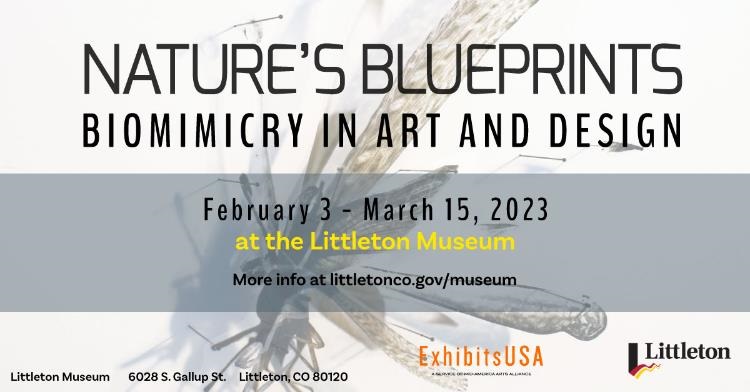
Exhibit Dates: February 3 - March 15, 2023
In an age of complex environmental challenges, why not look to the ingenuity of nature for solutions? The forms, patterns, and processes found in the natural world—refined by 3.8 billion years of evolution—can inspire our design of everything from clothing to skyscrapers. This approach to innovation, called biomimicry, is becoming increasingly popular. Nature’s Blueprints: Biomimicry in Art and Design opens February 3, 2023 at the Littleton Museum.
The exhibition Nature’s Blueprints: Biomimicry in Art and Design brings together art and design with environmental science using artifacts, artworks and photography, as well as interactive learning stations.
Biomimicry is not a novel idea; Gaudi and Da Vinci both took inspiration from nature. Modern science and technology, however, are rapidly expanding the types of materials and systems we can create. Bird wings. Spiderwebs. Rainbow Trout. These have inspired design improvements that enable faster travel, safer bridges, and more effective wind turbines. Similarly, biomimicry in art is a process that entails exploring the material properties, cycles, and dynamics of nature, and how whole biological systems are structured—and putting that into works of art. Artworks and designs that are rooted in the laws and forms of nature can address pressing issues, such as conservation, sustainability, and environmental justice. They can also spark an interest in, and connection with, nature.
This exhibition is aimed to encourage discourse among audiences of all backgrounds as our understanding of the natural world can lead to some extraordinary creations that improve lives and reduce our impact on the environment. Nature’s Blueprints: Biomimicry in Art and Design is an adaptation of the High Desert Museum’s Innovation Lab: Design Inspired by Nature, and is produced and toured by ExhibitsUSA, a program of Mid-America Arts Alliance.
About ExhibitsUSA
This exhibition is toured by ExhibitsUSA, a national program of Mid-America Arts Alliance. ExhibitsUSA sends more than twenty-five exhibitions on tour to over 100 small- and mid-sized communities every year. These exhibitions create access to an array of arts and humanities experiences, nurture the understanding of diverse cultures and art forms, and encourage the expanding depth and breadth of cultural life in local communities. For more about ExhibitsUSA, email MoreArt@maaa.org or visit www.eusa.org.
About Mid-America Arts Alliance
Mid-America Arts Alliance (M-AAA) strengthens and supports artists, cultural organizations, and communities throughout our region and beyond. Additional information about M-AAA is available at www.maaa.org.
škhé: it is said
Exhibit Dates: Friday, July 15 – Sunday, October 9, 2022
("škhé" is the sounds 'shh', then 'kay', pronounced together as 'shkay'.)

škhé: it is said is an early-career body of work by Denver artist Danielle SeeWalker, an enrolled Citizen of the Standing Rock Sioux Tribe. SeeWalker works across disciplines to explore the intersections of Native American stereotypes, microaggressions, and colonialist systems, both historically and in contemporary society. Drawing on au courant color palettes, expressionistic art strategies, and her Lakota traditions, SeeWalker spins her work into a contemporary vision to elevate historical perspectives as told from the side not often heard.
“My work over the past few years has used the revealing aspects of American Indian history, as told from the perspective of a Native person, to demonstrate the profound impact it has had on our contemporary cultures today. In the current climate, where many believe history has no relevance, or believe Native Americans are relics of the past, I find myself continually returning to those aspects that are often hidden or misrepresented in the ’official’ recordings for posterity. In my multidisciplinary and diverse approaches to making art through installations, studio work, public street art, and curatorial work, I want the context of the work to leave the viewer with a thirst for wanting to know more about the truth or simply leave realizing a new perspective.” – Danielle SeeWalker
The title škhé is the Lakota word that translates to “it is said” or “so they say” and exemplifies the storytelling through SeeWalker’s work. Historical events, stories, ceremonies, and ways of life of the Očeti Šakówiŋ (Lakota/Dakota/Nakota people) have always been passed down through oral tradition by elders, community criers, and culture bearers. These stories have been carried down from generation to generation and many of them have been told to Danielle by her father or other elders in her community.
About the Artist:
Danielle SeeWalker is a Húŋkpapȟa Lakȟóta citizen of the Standing Rock Sioux Nation in North Dakota. She is a mother, artist, writer, curator, activist, and businesswoman currently based in Denver. Her visual artwork often incorporates the use of mixed media and experimentation while incorporating traditional Native American materials, scenes, and messaging. Storytelling is an integral part of her artwork and pays homage to her identity as a Lakȟóta wíŋyaŋ (woman) and her passion to redirect the narrative to an accurate and insightful representation of contemporary Native America while still acknowledging historical events.
Alongside her passion for creating visual art, SeeWalker is a freelance writer and recently published her first book, titled “Still Here: A Past to Present Insight of Native American People & Culture.” She is also very dedicated to staying connected and involved in her Native community and is currently in her 2nd year serving as Co-Chair for the Denver American Indian Commission. Since 2013, SeeWalker and a long-time friend have been working on a personal passion project called The Red Road Project. The focus of the work is to document, through words and photographs, what it means to be Native American in the 21st century by capturing inspiring and positive stories of people and communities within Indian Country.
Instagram: seewalker_ART
(JPG, 356KB)
Open image in slideshow
Patterns of Consumption
Exhibit Dates: April 1, 2022 - June 26, 2022

Plastic touches every aspect of our lives. It’s in clothing, housewares, toys, medical devices, vehicles, and infrastructure. It coats our walls, transports our water, encases our food, fills our cavities, even prolongs our lives. Yet the word “plastic” is equated with cheapness, both in quality of construction and value. Why? How has a material that in only seventy years has replaced all traditional materials in every application earned the reputation for being worthless? Shouldn’t it be the opposite? Shouldn’t it be revered?
Though much of the environmentally themed work we see that deals with plastic is about trash and guilt, the work of Kalliopi Monoyios seeks to reach people by embracing the complexity of our relationship with the material and speaking openly about it. By treating it with devotion, like the precious resource it is, she points a finger at consumerism as the root of our pollution problems, while honoring a material that makes modern life efficient and comfortable. Monoyios collects, washes, folds, and sews food wrappers into quilts that could be handed down through generations as heirlooms. She folds plastic into thousands of interlocking modular origami pieces while meditating on her wish for a solution to the plastic pollution problem in the tradition of senbazuru (folding 1000 origami cranes for peace). Creating beauty from a workhorse material that society undervalues and treats as disposable is an act of devotion and hope. Only when we fully appreciate how integral it is to our lives and our livelihood can we begin to change our attitudes about its value.
The body of work in this exhibit expands on Monoyios’s themes of surprising and quirky uses of plastic, all with the goal of inviting people to think deeper about their own relationships with the material. Featuring a combination of framed works, free-standing sculptures, large quilts, and installation, the exhibit combines single-use plastic food wrappers, PTFE dental floss, silicone contact lenses, and other surprising plastics (spoiler alert: chewing gum is plastic!) as fine art media. A small selection of familiar mass-produced items is also included in the exhibit in order to reveal the incredible versatility of this wonder material.
The exhibit will be open to the public in the Fine Art gallery at the Littleton Museum from Friday, April 1, 2022 - Sunday, June 26, 2022.
About the Artist:
Kalliopi Monoyios is a visual creative dedicated to communicating the wonder of the natural world to a wide and varied audience. After graduating from Princeton University with a degree in geology, she built her career as a science illustrator for the prominent paleontologist Neil Shubin at The University of Chicago. Her illustrations have appeared inside and on the covers of top peer review journals such as Nature and Science as well as in four popular science books, including The New York Times best-seller, Your Inner Fish by Neil Shubin. Illustrating for such diverse audiences taught her the value of having a large array of media at your fingertips — everything from traditional media, graphic work, fine art, cartoons, writing, and even performance can spread science far and wide. In 2011, she co-founded Symbiartic, a blog covering the intersection of science and art, exploring some of these broad-ranging scicomm/sciart efforts for Scientific American.
In 2019, she was elected President of the Guild of Natural Science Illustrators, a group of professionals who communicate science through art. Now, driven by the conviction that science communicators operating in all spheres are a critical part of creating a scientifically literate public, she is developing new avenues of public engagement with science via her own art and curated exhibits.
The Secret Life of Clothes
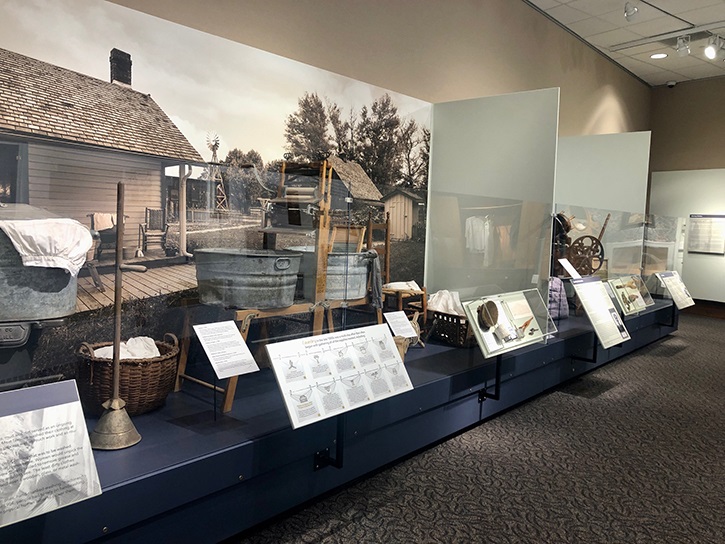

November 5, 2021 – November 27, 2022
With over 8 billion people on Earth, one of the common threads that humans share is wearing clothes as a basic necessity for protection and also a means of self-expression. But when we think about clothing, it’s usually in connection to fashion and how and where the person is wearing their clothing, more often than not, outside of the home and irrespective of the origins of the very fabric the item is made of. While clothing began as a basic necessity to individuals who had a very intimate connection to the laborious process of its creation, care and storage, in more modern days, it has evolved into a highly accessible, but easily detached from and disposed of, means of societal expression.
The Secret Life of Clothes tells the everyday story of the “lifecycle” of clothes – the overlooked journey of clothing as a progression from fiber to finished garment, sale to storage, and finally to mending, disposal or reuse. This exhibit examines the purpose and need for different clothes, as well as the lifecycle processes over different time periods in Colorado: 1860 through modern day. Visitors will experience a variety of fashions, as well as the tools, materials, and context of how those clothes were made, worn, cared for, mended, and stored.
The exhibit also explores the future of clothing, considering the economic, cultural, and environmental impacts of the massive growth of the fast-fashion clothing industry and how, in response, new innovations are leading the way towards a more sustainable clothing lifecycle for future generations.

Print Renaissance: Mid-century Masters of American Printmaking
Exhibit Dates: September 24 - October 16, 2021
The founding of new print studios in the United States during the 1950s and 1960s led to a resurgence of printmaking. As artists began working alongside skilled printmakers, lithographs and silkscreens grew increasingly popular as more affordable options for collecting original works. Artists, including Andy Warhol, Claes Oldenburg, Frank Stella and Robert Rauschenberg, integrated printmaking into their artistic practices. This exhibition features these artists and more in a celebration of 20th-century masters of American printmaking. Visitors will learn about printmaking techniques and this important chapter in American art history.
Print Renaissance features 18 artworks and is part of the University of Colorado Art Museum’s Polly and Mark Addison Outreach Exhibition Program, through which the museum works with Colorado cultural institutions to tour art exhibitions curated from works of art Polly and Mark Addison donated to the museum. The Outreach Exhibition Program is supported by the Office of the Chancellor.

The Way We Played
Exhibit dates: September 13, 2019 to July 24, 2021
The Littleton Museum is excited to present the exhibition The Way We Played. Inspired by nostalgia, this is a toy exhibit for all ages. Featuring artifacts from the Littleton Museum collection, as well as objects on loan, the exhibit prompts visitors to consider the ways that they engaged with different types of toys as a child. The interactive stations included in the exhibit assist in the nostalgic experience through sensory engagement. There is even a memory share station where visitors can read other community members’ stories about their favorite toys from childhood, and in turn leave their message about the way they played. The museum has produced a video about this exhibit.
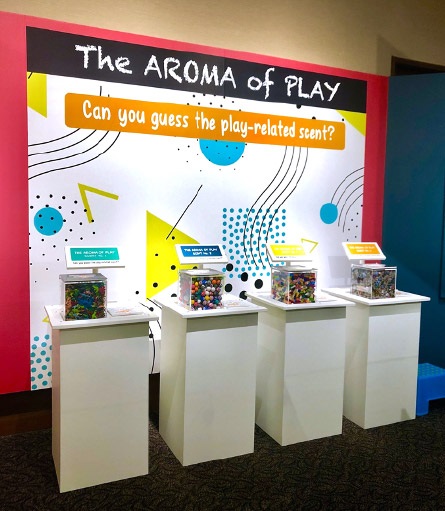
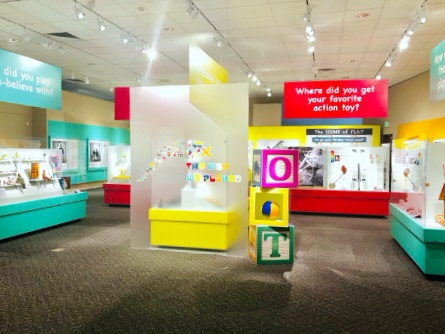
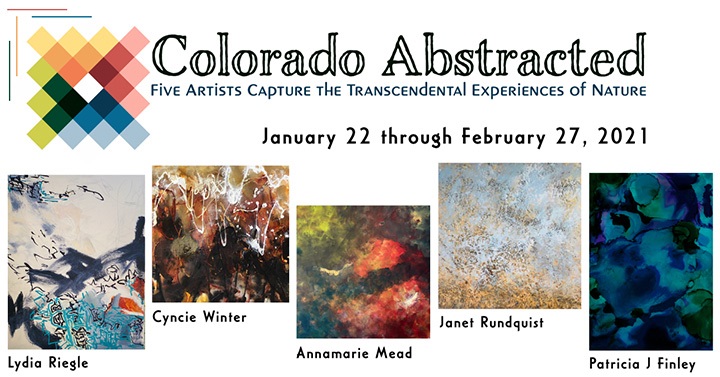
Colorado Abstracted: Five Artists Capture the Transcendental Experiences of Nature
Exhibit dates: January 22, 2021 - February 27, 2021
"Instructions for living a life: Pay attention. Be astonished. Tell about it.”
— Mary Oliver, poet
The Littleton Museum is proud to present Colorado Abstracted: Five Artists Capture the Transcendental Experiences of Nature, a group exhibition, featuring the artwork of Patricia J. Finley, Annamarie Mead, Lydia Riegle, Janet Rundquist, and Cyncie Winter.
Life in Colorado is a lyrical mix of sight, sound, air, and spirit and the combination thereof serves to replenish the creativity of this established group of abstract artists. Together their paintings celebrate what the Colorado lifestyle means to them and how it influences their artistic process. The genesis of these female artists’ creativity is driven by the ethereal qualities of the natural world: the expansive blue skies, the magical quality of light at high altitude, the abundant sunshine, and the clarity and dryness of the air. Additionally, mountain adventures and hiking and skiing together is a valued part of their inspiration. With an independent Western spirit, they paint the wonder of a life lived in Colorado in an abstracted way. Each artist employs different materials and unique points of focus to go beyond the details of nature. In their work, they dive below the surface of things to capture and express the emotional, sensory, and transcendental experiences that emerge from the sights and sounds of this beautiful state. The selected works presented in this exhibit will invite viewers to experience Colorado through the distinct and transformative lens of each artist.
Virtual Tour
Artist Info
Patricia J. Finley
Patricia J. Finley is an American painter who has sold her work internationally and has won several awards including most recently First Place in the 2019 Littleton Museum’s Own an Original: Destination show.
Patricia was a successful lawyer before turning to full-time art, and today focuses on using pigment, paint and ink mixed into resin to compose intense, lively works. Her landscapes, seascapes and abstracts burst with color and shine from resin's polish, and there exists a complexity between the apparently simple surface and what lies beneath it: the power of every shape and curve to immerse the viewer in visceral scenes.
Patricia is represented by Walker Fine Art in Denver and Chicago Art Source Gallery in Chicago.
patriciajfinley.com
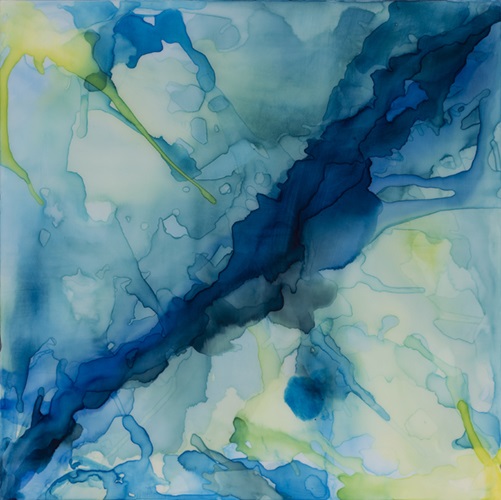
Patricia J. Finley, I Am A Translation, Ink and Resin, 36 inches x 36 inches, $3,250.
Annamarie Mead
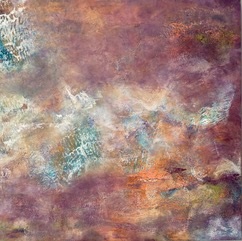
Annamarie Mead, Dream into Dawn Oil and cold wax on cradled birch board, 24 inches x 24 inches, $1,000.
A native West Virginian, Annamarie Mead has made Colorado home for over 40 years. Annamarie has always made creating art a part of her life and has been a professional artist for the last 11 years. She is an award-winning artist in Evergreen, Colorado. As a lifelong creator, Annamarie has always had her head in the clouds while she walked in nature, being guided by a force beyond herself. Abstract art became her way of expressing nature through the light and beauty she saw and felt everywhere. Annamarie approaches her canvases with intuitive marks and gestures full of life, light, energy and color as she dreams of visiting distant realms. Annamarie hopes that the audience feels the touch of light and energy from a source beyond our daily lives when viewing her paintings. Her goal is to wash away the dust of mundane existence and reveal the rich depth of meaning that shines through our lives when we pause for a moment and reach for something magical in the present world.
annamariemead.com
Lydia Riegle
Lydia Riegle is a Denver, Colorado, based painter and printmaker. Her expansive gestural approach and material exploration cross-pollinate in abstract paintings and printmaking resulting in artwork that is highly charged, complex, and uniquely personal. Often utilizing a drawing quality in art making, Riegle’s work is reflective of her immigrant background and serves to illustrate the rich and often complex concepts of connections and back-stories.
Riegle combines a Degree in International Studies with an emphasis in Latin American Studies from the University of Colorado Denver. Her experiences at art classes at the Art Students League of Denver as well as with Homare Ikeda, Jordan Wolfson and Mark Lunning create her personal perspective towards her art making.
Riegle’s work can be found in numerous private and corporate collections. She is an active member of Denver’s art community participating in art symposium panels and juried art shows. As a member of Sync Gallery since 2011 and D-art Gallery since 2019, she was awarded Best Painting at The Best of Art District on Santa Fe in 2014. She has been interviewed by Voyage Denver and The Denver Dart Magazine.
lydiariegle.com
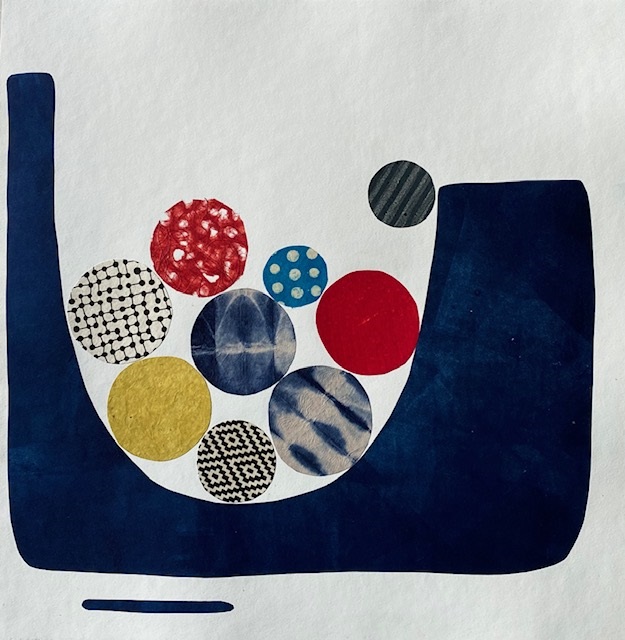
Lydia Riegle, Gathering Stories Monotype, Collage, Archival Paper, 33.5inches x 33.5 inches, $950.
Janet Rundquist
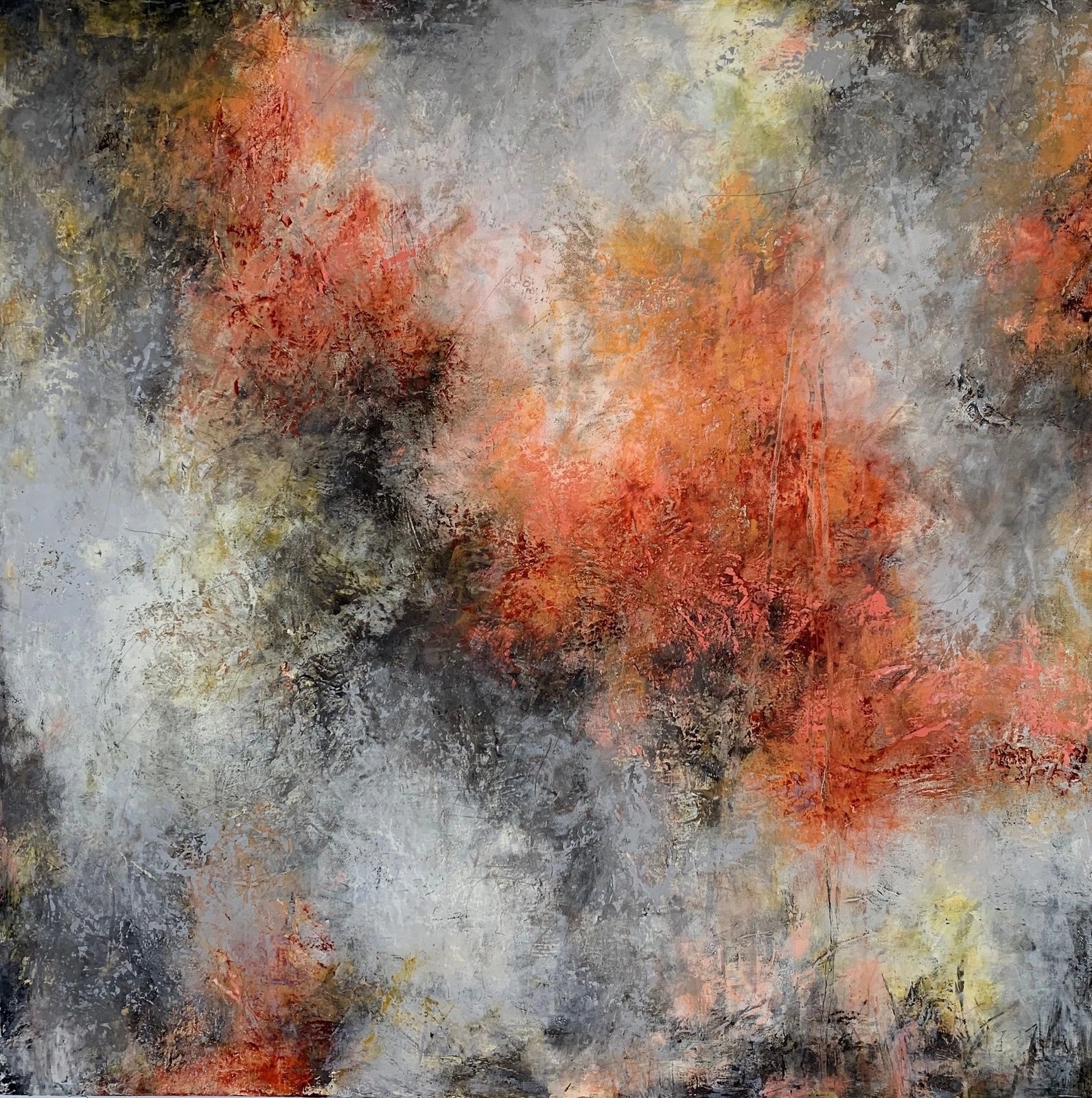
Janet Rundquist, Yet, Closer Than You Think, Oil, cold wax medium, and wood ash, 48 inches x 48 inches, $4,600.
Janet grew up on the prairies, hills and mountains of Wyoming. She spent much of her time outdoors collecting animals, exploring, and watching the changing clouds and weather. These experiences ultimately culminated in her infatuation, love and respect for her natural surroundings. Since graduating from the University of Wyoming with a BA in Art and Art Education, Janet has led a life which has revolved around art.
Before she began painting full time, she co-managed an art gallery, worked as a graphic designer, taught art in the public schools and served on various non-profit art boards. As a painter, Janet continued her art studies at the Chicago Art Institute. Later, under the mentorship of Marianne Mitchell, she was encouraged, and still continues to experiment, evolve and become more intimately connected to her work.
Having painted with oils for over 20 years Janet only recently became intrigued with the process of mixing cold wax with oil paints. She completed a cold wax workshop with Jerry McLaughlin and continues to use this combination along with different colored sands found on her travels, and wood ash from her fireplace. Janet builds layer upon layer, scraping away and building more. Eventually, artwork emerges which speaks of Janet’s deep ties with Mother Nature both spiritually and emotionally.
janetrundquist.com
Cyncie Winter
Cyncie Winter is a professional artist, a psychotherapist, a life coach, and a certified creativity coach. Although she has painted all her life, for the past several years she has focused primarily on working with abstract acrylics. Her paintings are a reflection of the beauty found in the natural world and the courage of the human experience. Her current artwork is featured on her website at Cyncie Winter Contemporary Art.
In addition, she has been a member of SYNC Gallery in the Arts District of Santa Fe in Denver since 2011, and also exhibits her work in other local galleries, public places, and high-end businesses. She has sold her work nationally.
Cyncie strongly believes that when we respond to the inner call to create, we build the capacity to claim balance, peace, and commitment to a transformative path and the ability to forge a life of meaning.
cynciewinter.com
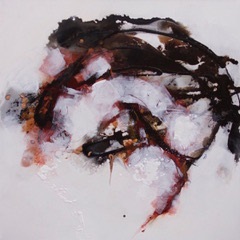
Cyncie Winter, Lacewing, Acrylic, 24 inches x 24 inches, $900.
Video link: Family Program - Make Your Own Abstract Collage